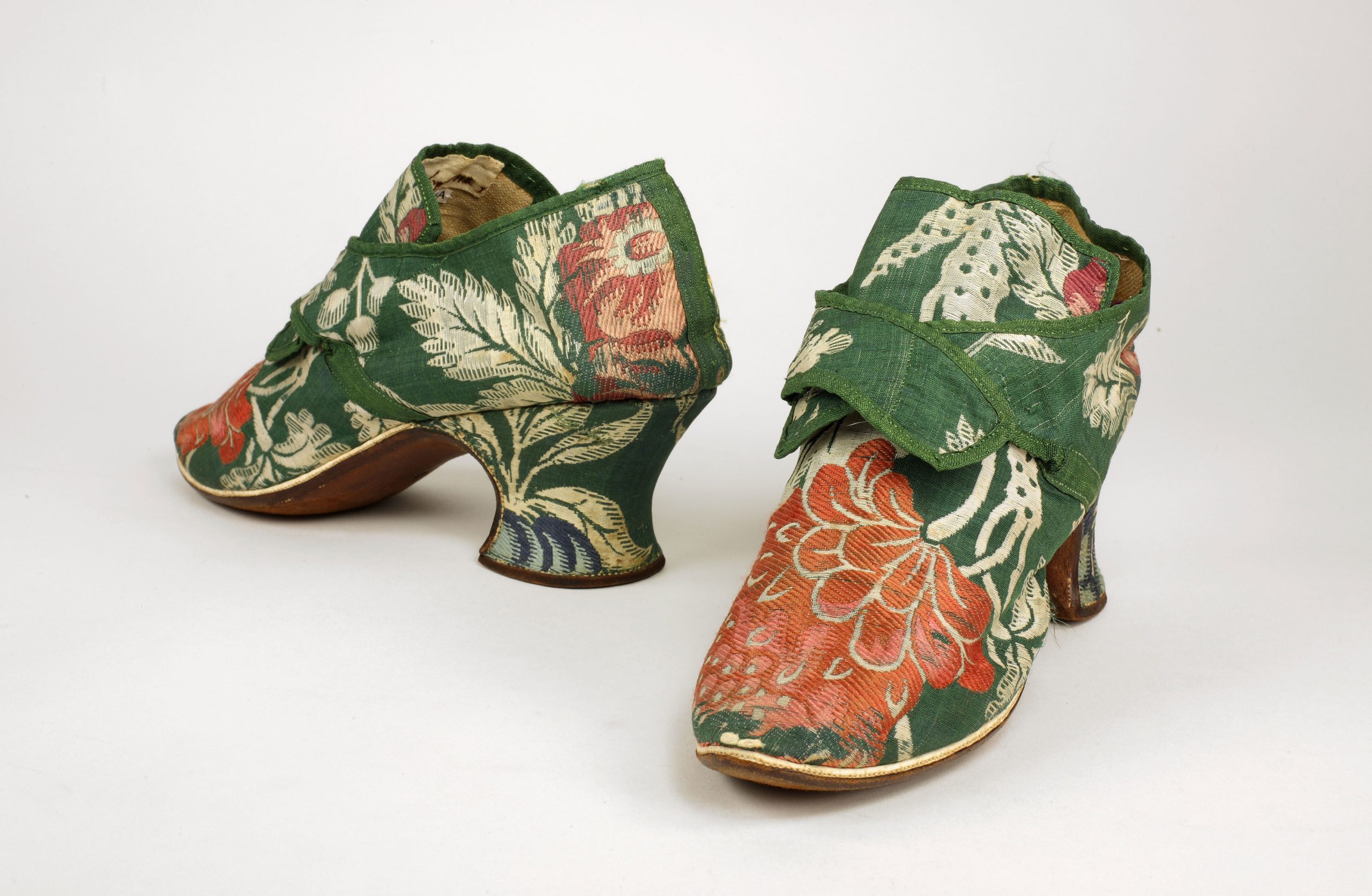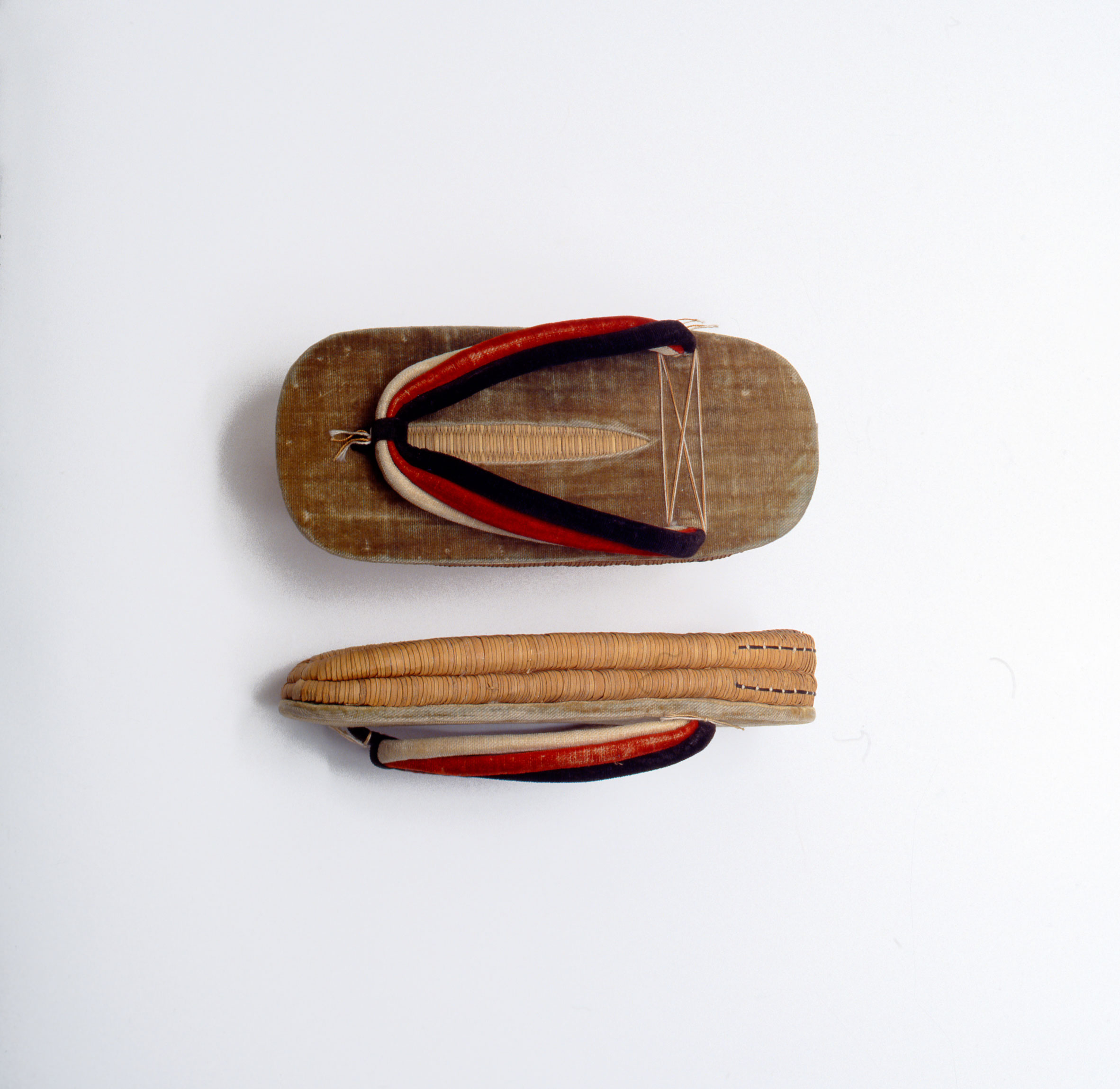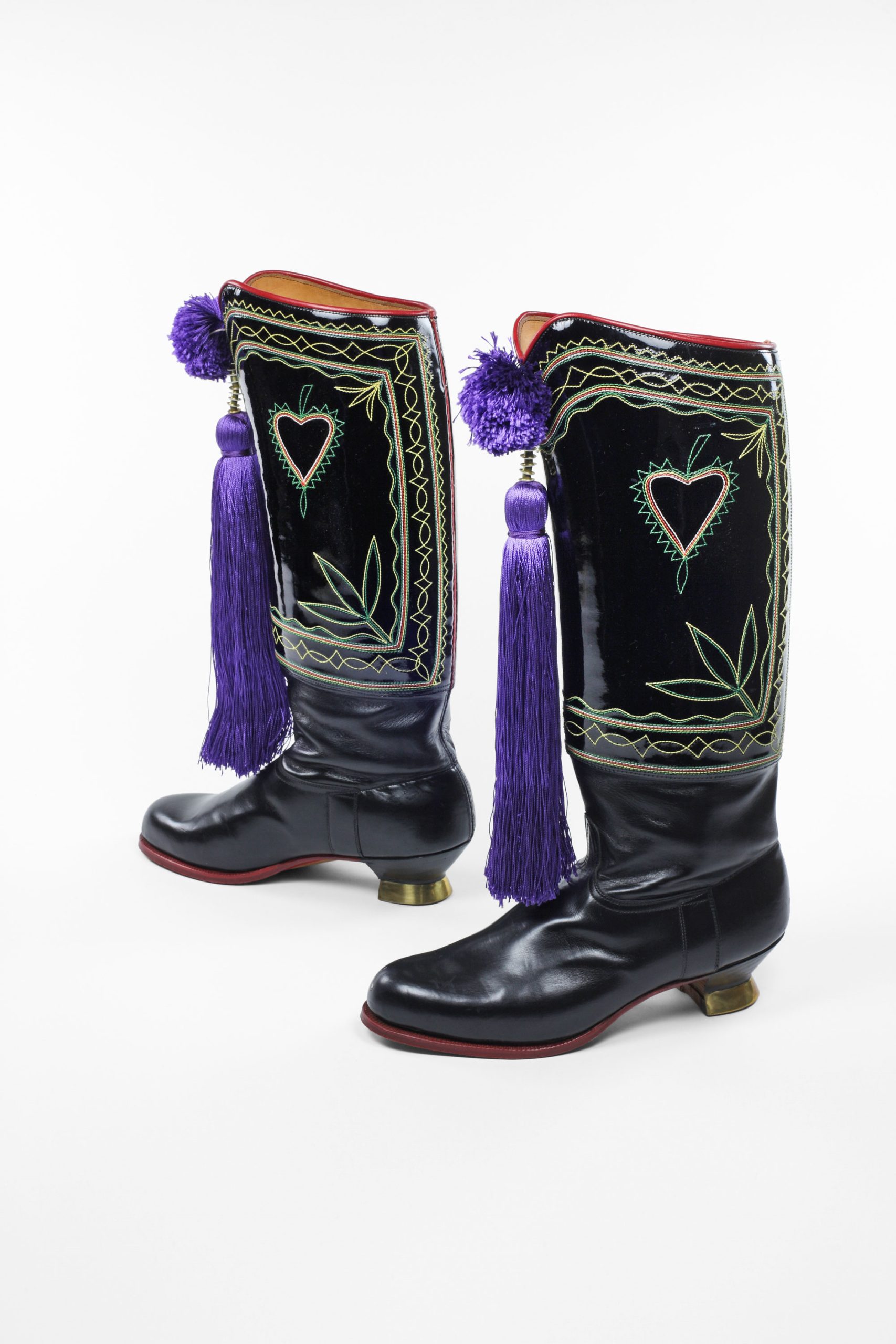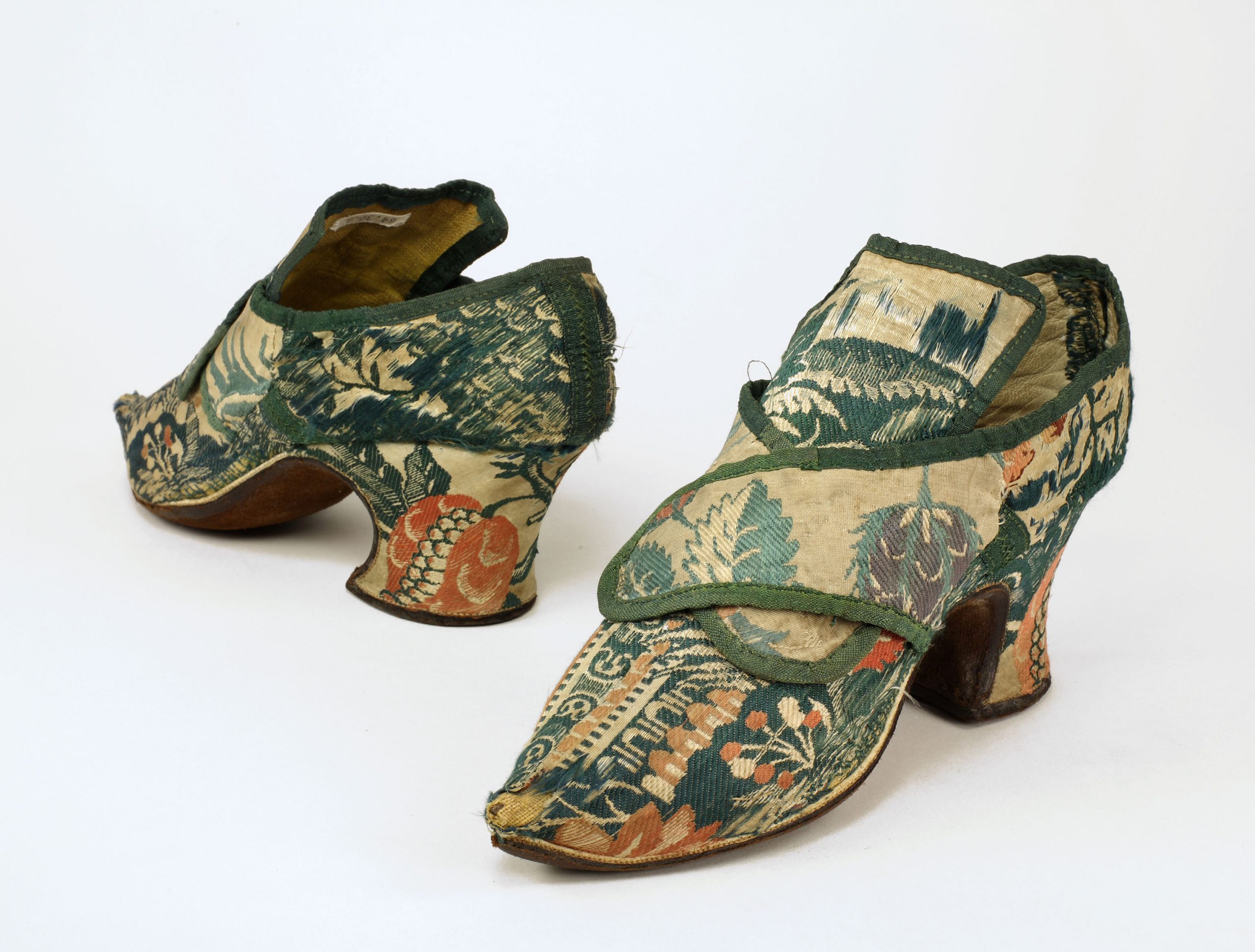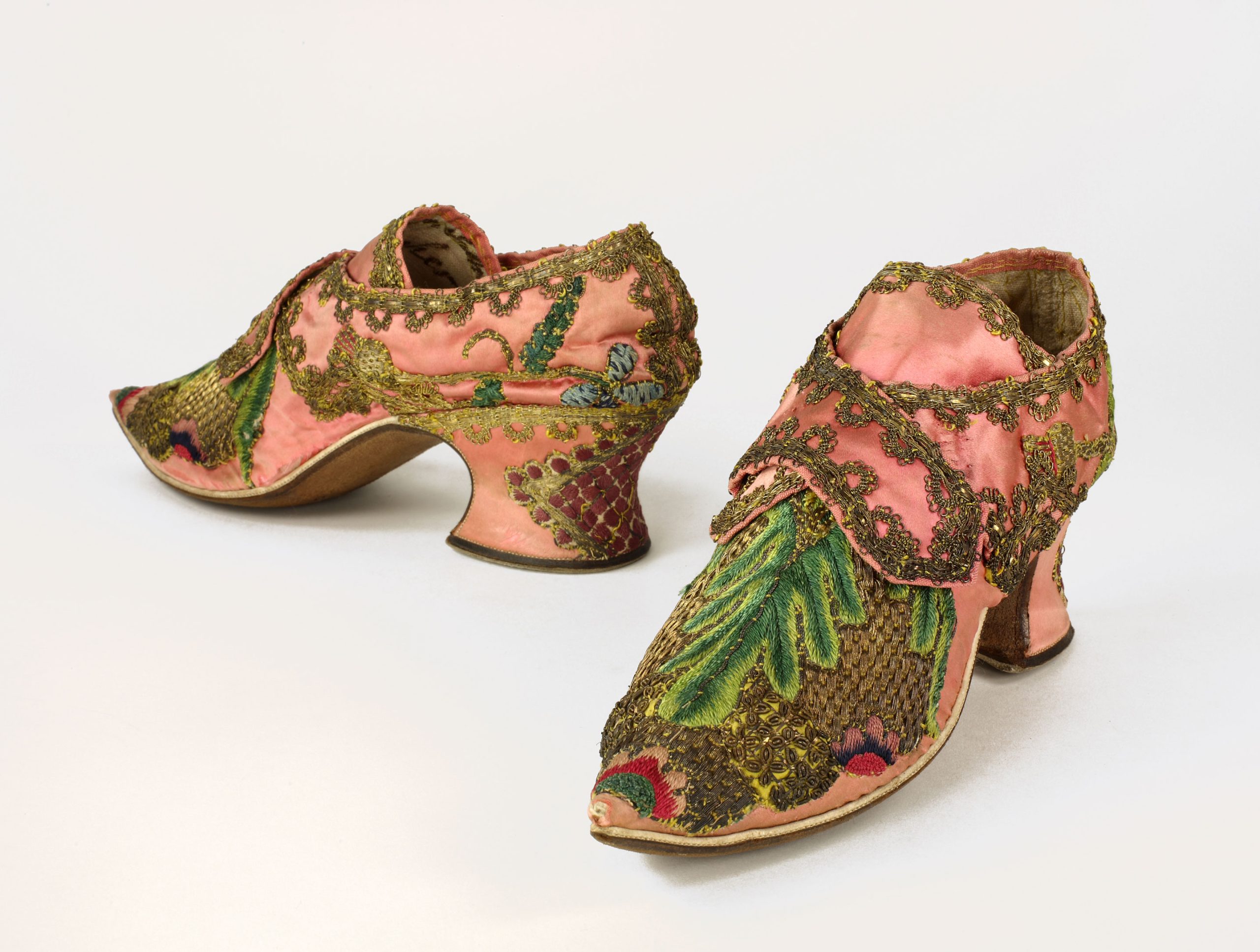This pair of double-soles zori are finely woven and covered in luxurious velvet.
This vivid silk shoes were most likely saved for special occasions.
The large blossoms give these shoes an exotic flair.
These men's boots from Czech Republic would be worn for special occasions or on festival days.
These green and white shoes were altered to be worn with buckles.
Matching Game
Drag the picture over to the matching description.
Once the image matches the description both will disappear.
Well done!
Created by Katarina Kaneff © 2022

